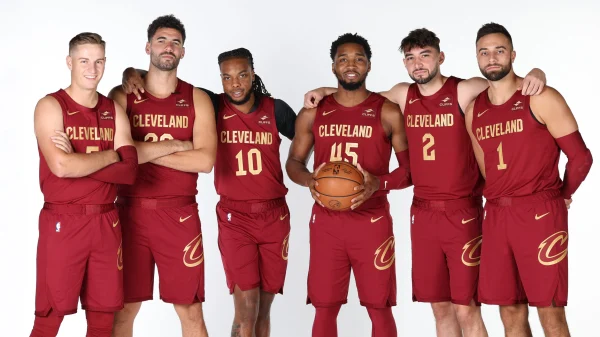Baseball Analytics: What Weren’t They Thinking?

Photo credit: USA Today
The 2020 World Series provided every one of its viewers, from the baseball purist to the analytical experimentalist to the fan who just wants to see the Rays pull off crazy, seemingly nonsensical managerial maneuvers, something to enjoy. During game 7, sports fans, data lovers, and everyone in between seemed to gasp collectively as Kevin Cash took out Blake Snell, who had thrown an absolute gem through 5 and a third innings.
Instead, Cash brought in the struggling Nick Anderson, who promptly gave up a double to Mookie Betts which led to a two-run sixth inning which effectively clinched the World Series for the Dodgers. However, many baseball purists responded to this with outrage that baseball analytics had failed, and analysts like Alex Rodriguez have made this a rallying cry against the “ivy-leaguers” running major league baseball today. While these fans have valid arguments against, in my opinion, the brutal decision of Kevin Cash, they fail to understand that this decision was not based on analytics. Instead, it was more of a gut call by the Rays skipper who progressively seemed to become more and more unorthodox with his moves as the postseason drug along and his offense, minus Randy Arozarena, struggled to muster any runs. As Cash said after the game, “As much as people think that sometimes, there’s no set plan. This organization’s tremendous about giving the staff the trust to make in-game decisions to give us the best chance to win. I respect what unfolded today was pretty tough.”
It remains obvious that this move was not based on the “ivy-leaguers,” as A-Rod says, but was instead a decision made without sound reasoning by the Tampa Bay manager, who took one piece of data and ran with it without understanding the context. Contrary to popular belief, analytics is simply the increased amount of information and data available to Major League teams, it is not a set code that dictates every decision made by a team. If Cash had instead considered Snell’s utter domination that night, Betts’ woes against lefties, and the lack of success Anderson had, he likely would have come to a different conclusion. Nevertheless, he made a decision that defied both the beliefs of sabermetricians and baseball purists, and this came back to hurt the Rays greatly, with their season coming to a close shortly thereafter.
Following the game, and through the entirety of the postseason, fans such as John Smoltz chose to make a stand against the sabermetrics of baseball and advocated for the reintroduction of “classic” baseball, the one played without shifts, bullpen games, and large quantities of home runs. While the shift fails a small, but obvious percentage of the time, and the decision by Kevin Cash, based loosely on analytics, was nothing short of a disaster, analytics clearly have taken over baseball, and whichever teams analyze this most efficiently and effectively will win the majority of the time. The two teams in the World Series, and three of the four teams in the league championship series (discluding the Braves), are arguably the top three teams in baseball in terms of quantity of analytics used. The Dodgers and Astros are easily near the top of the list of baseball statisticians and data analysts employed, and the Rays continue to be on the cutting edge of data usage.
Although the Rays are at the bottom or near the bottom of attendance, revenue, and salary every year, they manage to make the playoffs and field a competitive team nearly every year. Even today they control baseball’s top prospect and diamond in the rough, breakout star Randy Arozarena. Through the entire season, they were able to assemble a team of DFAs, home-grown talent, and journeymen to rival the Yankees, Dodgers, Astros, and baseball’s cream of the crop.
A perfect example of the “Ray’s Way,” as coined by current Red Sox GM and former Rays executive Chaim Bloom, is the acquisition of Yandy Diaz. While Yandy Diaz was with the Indians, he suffered from a low BABIP (batting average on balls in play), and high differences between his expected and true stats. In addition, Diaz was near the top of the league in exit velocity, and there was no question he could hit the ball. To the Rays, all that had to be done was to increase the launch angle of his swing to turn Diaz into a home run machine. In the 2019 offseason, the Rays were able to acquire him for almost nothing, and he batted leadoff for them in the 2020 World Series, and if he could further improve his launch angle over the off-season, stardom could be in his future.
If one simply increased the Rays payroll, the Dodgers and Astros would be the product. Like the Rays, the Dodgers and Astros heavily utilize analytics and data to construct their team. The Dodgers have surrounded bona fide stars Mookie Betts and Clayton Kershaw with “Rays-style” players, players who failed with another organization or who were grown within the organization, such as Max Muncy, Julio Urias, and Justin Turner.
On the flip side, the least analytical team in the league, the Rockies, has been unable to field sustainable success over recent years. They constantly overpay aging stars with sub-par peripherals (expected stats), such as Daniel Murphy and Kevin Pillar, and they are unable to build a farm system due to the revolving door of trades and lack of player scouting beyond the eye test and basic athletic skills.
Like it or not, analytics have revolutionized the sport of baseball, and they won’t go anywhere in the coming years. Now, especially for baseball purists, is a pivotal time for reflection over the sport, and instead of complaining about analytics, maybe now is the time to finally learn and embrace them.







